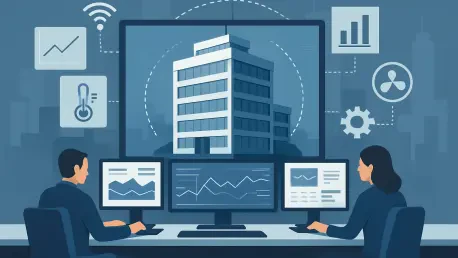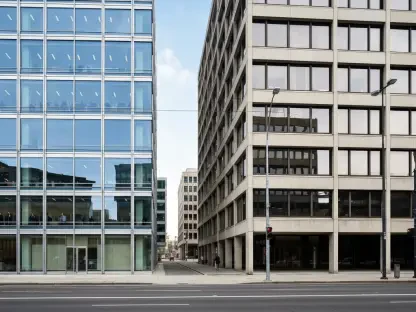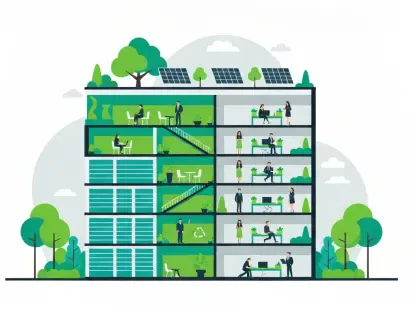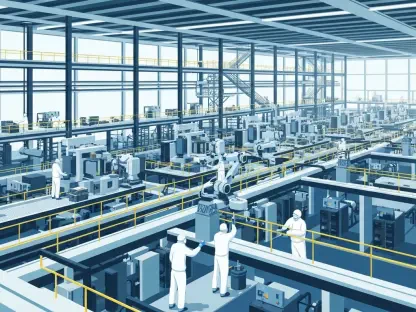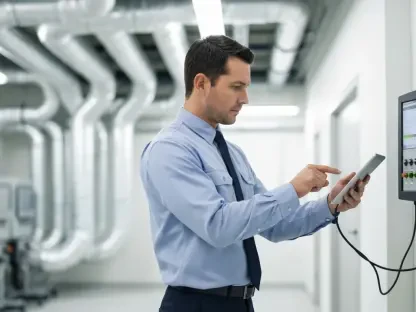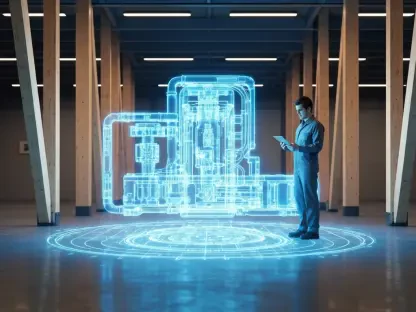In an era where energy demands are skyrocketing and sustainability is no longer just a buzzword, the challenge of managing building and data center infrastructure has become increasingly complex, requiring innovative solutions that can keep pace with rapid technological advancements. Buildings today are not merely structures but intricate ecosystems driven by electrification and digital transformation. Addressing this pressing need, a significant collaboration between a leading intelligent power management company and a pioneer in design technology has emerged to redefine how these environments are designed, built, and operated. This partnership promises to tackle the evolving landscape of energy resilience by introducing cutting-edge tools that prioritize efficiency and predictive management, setting a new benchmark for the industry.
Transforming Building Management Through Innovation
Harnessing Digital Twins for Energy Efficiency
The core of this groundbreaking collaboration lies in the integration of advanced digital energy twin technology, which serves as a virtual replica of physical building systems. This innovative tool enables designers, contractors, and facility managers to simulate energy usage under various scenarios, offering a glimpse into potential operational challenges before they manifest. By mirroring real-world conditions, the technology provides actionable insights that help optimize electrical system performance across commercial buildings and data centers. This proactive approach not only reduces operational costs but also aligns with sustainability goals by minimizing energy waste. The ability to predict outcomes and test infrastructure upgrades virtually marks a significant departure from traditional reactive strategies, empowering stakeholders to make informed decisions that enhance building resilience.
Beyond simulation, the digital twin technology fosters a deeper understanding of energy dynamics within complex structures. Facility managers can analyze how different variables, such as weather changes or occupancy levels, impact energy consumption, allowing for tailored adjustments that improve efficiency. This level of precision is particularly critical in data centers, where uptime and energy reliability are paramount. The seamless connection between virtual models and real-time data ensures that building systems remain adaptable to shifting demands, creating a dynamic ecosystem that evolves alongside technological and environmental changes. Such capabilities underscore the transformative potential of digital tools in redefining how energy is managed in modern infrastructure.
Integrating Building Information Modeling (BIM) with Advanced Tools
A pivotal aspect of this partnership is the fusion of Building Information Modeling (BIM) with digital twin capabilities, streamlining the complexities of electrical system design and operation. This integration enhances the accuracy of simulations by providing a detailed digital framework that captures every facet of a building’s lifecycle. Designers can now visualize and test electrical systems with unprecedented flexibility, ensuring that potential issues are identified and resolved during the planning phase rather than after construction. This synergy not only saves time and resources but also elevates the overall quality of building projects by fostering a more intelligent and data-driven approach to infrastructure management.
Moreover, the combination of BIM and digital tools supports reliability-centered maintenance programs, which prioritize the longevity and performance of critical systems. Facility operators benefit from enhanced visibility into system health, enabling them to schedule maintenance activities based on predictive data rather than arbitrary timelines. This shift toward informed decision-making minimizes downtime and extends the lifespan of equipment, delivering substantial cost savings over time. By bridging the gap between design and operation, this collaborative effort ensures that buildings are not only built smarter but also managed with a forward-thinking mindset that anticipates future needs and challenges.
Shaping a Sustainable Future for Infrastructure
Driving Predictive Strategies in Energy Management
The emphasis on predictive rather than reactive strategies stands as a cornerstone of this alliance, reflecting a shared vision for the future of building management. By leveraging sophisticated software and data visualization tools, building operators can anticipate energy demands and mitigate potential disruptions before they occur. This forward-looking approach is particularly vital in an era of distributed energy sources and increasing electrification, where traditional management methods often fall short. The ability to simulate various operational scenarios equips stakeholders with the knowledge to optimize energy resilience, ensuring that buildings and data centers remain operational even under adverse conditions.
Additionally, predictive strategies contribute to long-term sustainability by reducing unnecessary energy consumption and associated carbon footprints. Building owners can use insights derived from digital simulations to implement upgrades that align with environmental standards, fostering greener infrastructure. This focus on data-driven decision-making extends beyond immediate operational benefits, positioning buildings as integral components of a broader energy ecosystem. The collaboration highlights how technology can bridge the gap between current challenges and future aspirations, creating a blueprint for smarter, more sustainable urban environments.
Commitment to Education and Real-World Impact
Recognizing that technology alone is not enough, this partnership places a strong emphasis on education and training to maximize the benefits of digital innovations. Workshops and programs are designed to equip industry professionals with the skills needed to harness digital twins and other tools effectively, ensuring that these advancements translate into tangible outcomes. By fostering a culture of continuous learning, the initiative addresses the knowledge gap that often hinders the adoption of new technologies, empowering operators to improve building performance through informed practices. This dedication to skill development is a critical step in driving widespread industry transformation.
Furthermore, the focus on real-world application ensures that the solutions developed through this collaboration are not just theoretical but deliver measurable results. Case studies and pilot projects demonstrate how predictive tools and integrated modeling can enhance operational efficiency in diverse settings, from sprawling commercial complexes to high-demand data centers. This practical approach builds confidence among stakeholders, proving that digital transformation is not a distant concept but an achievable reality. The commitment to bridging innovation with actionable impact reflects a holistic strategy that shapes the industry’s path toward a more resilient and efficient future.
